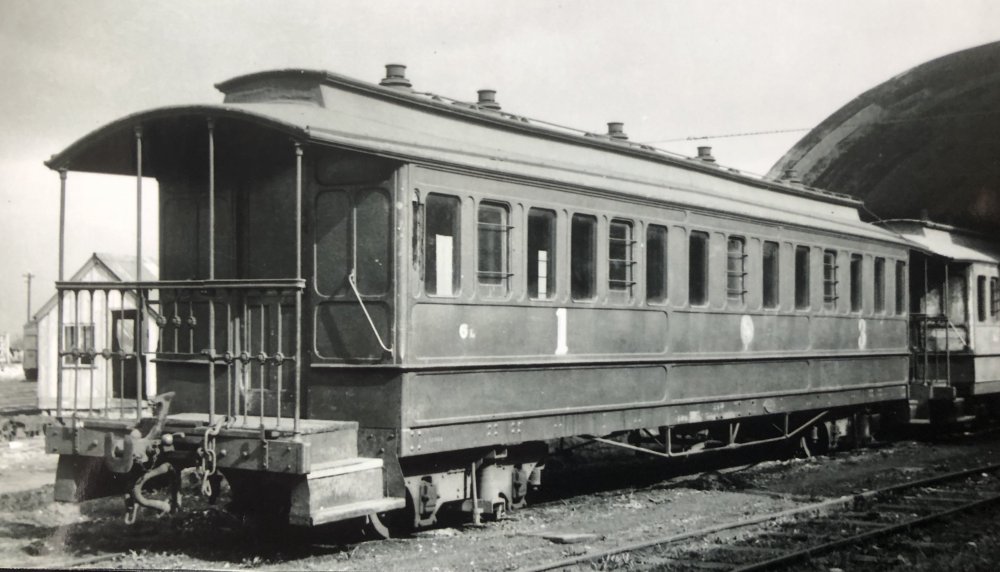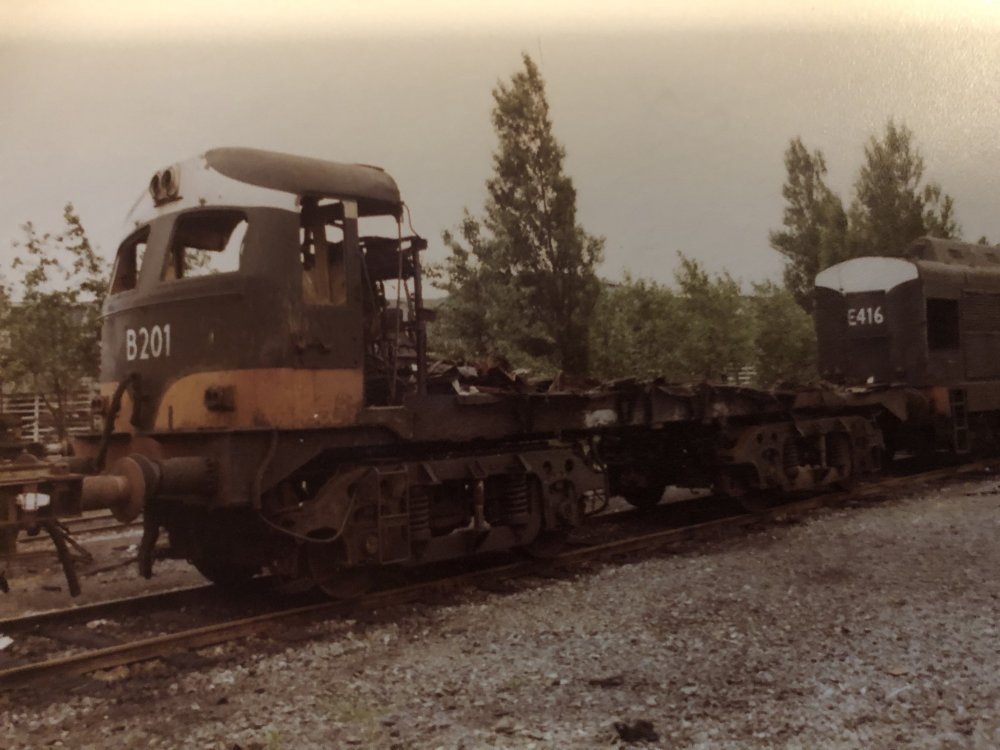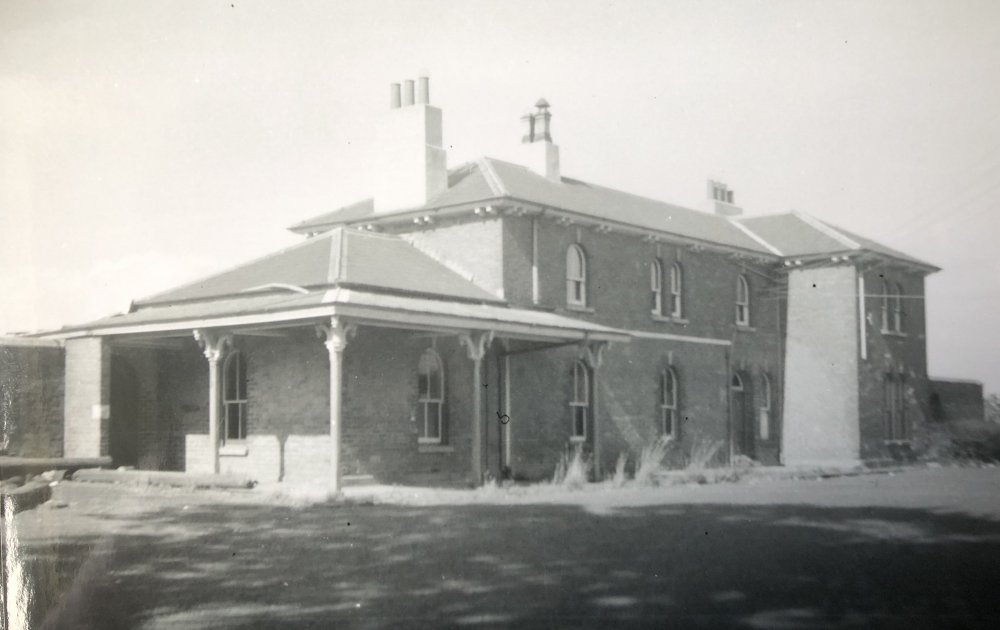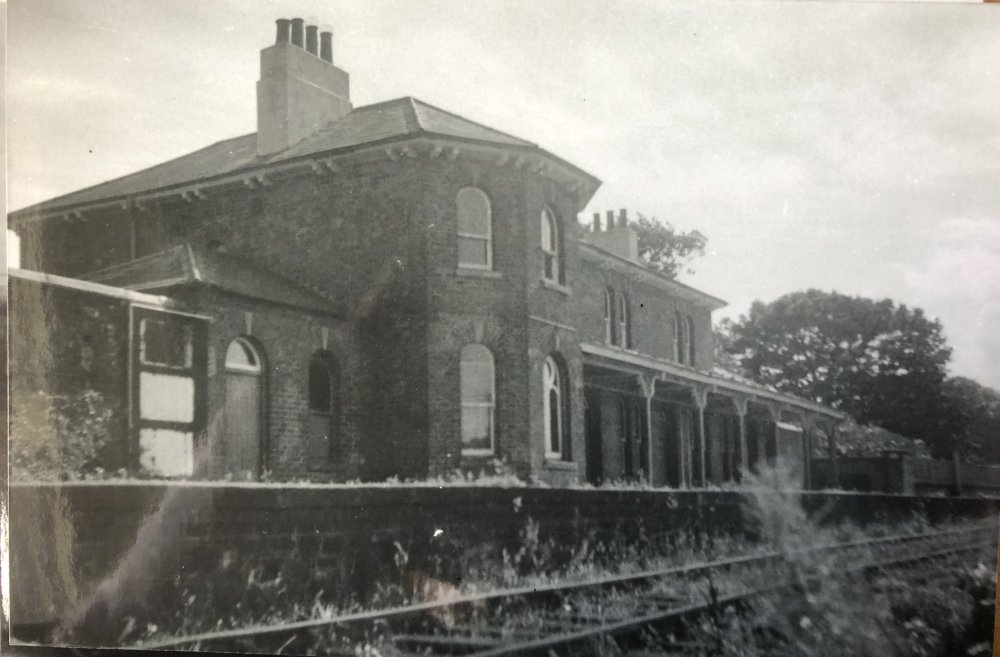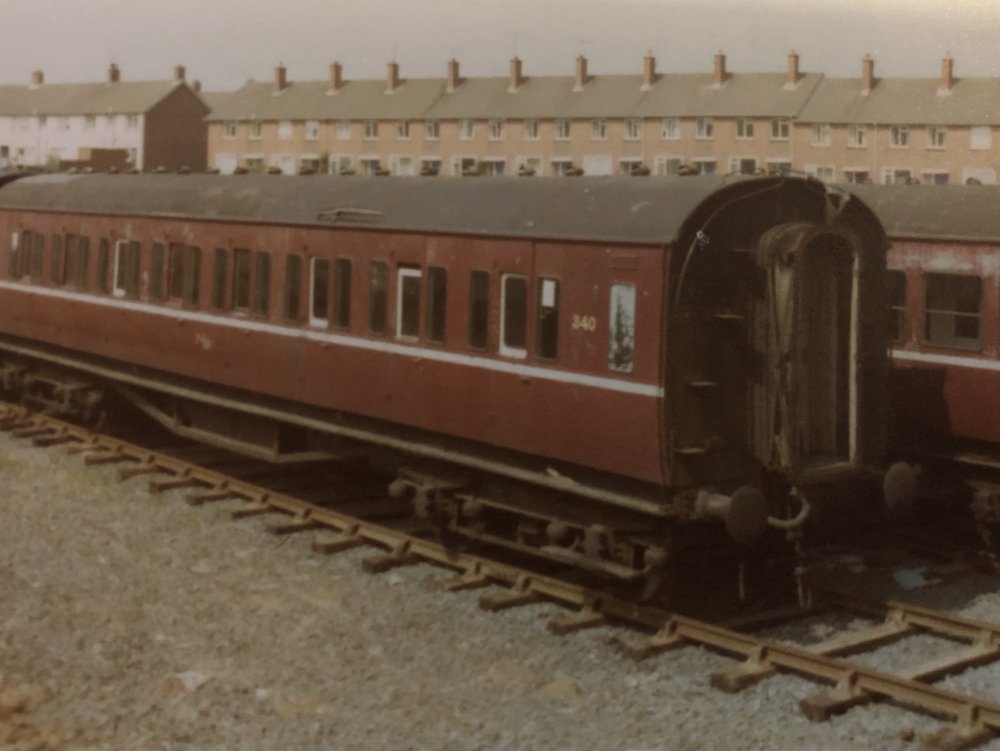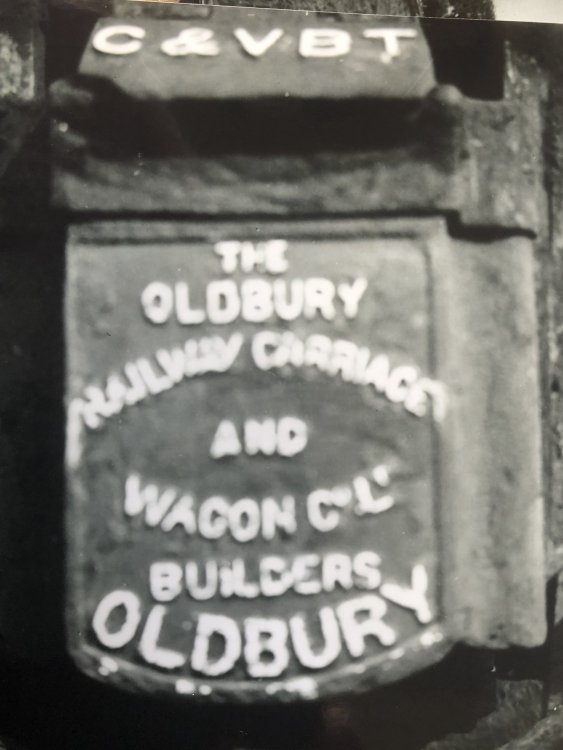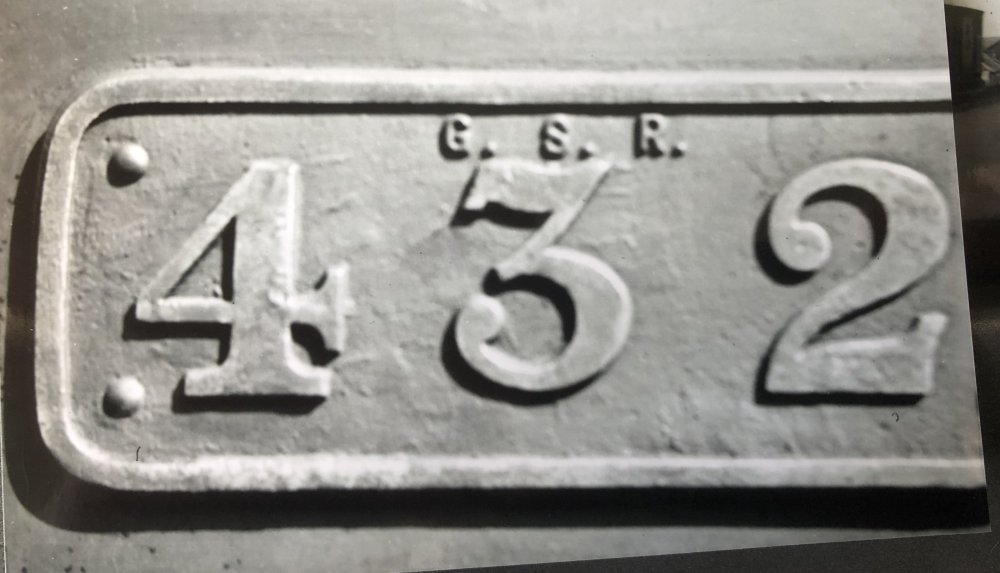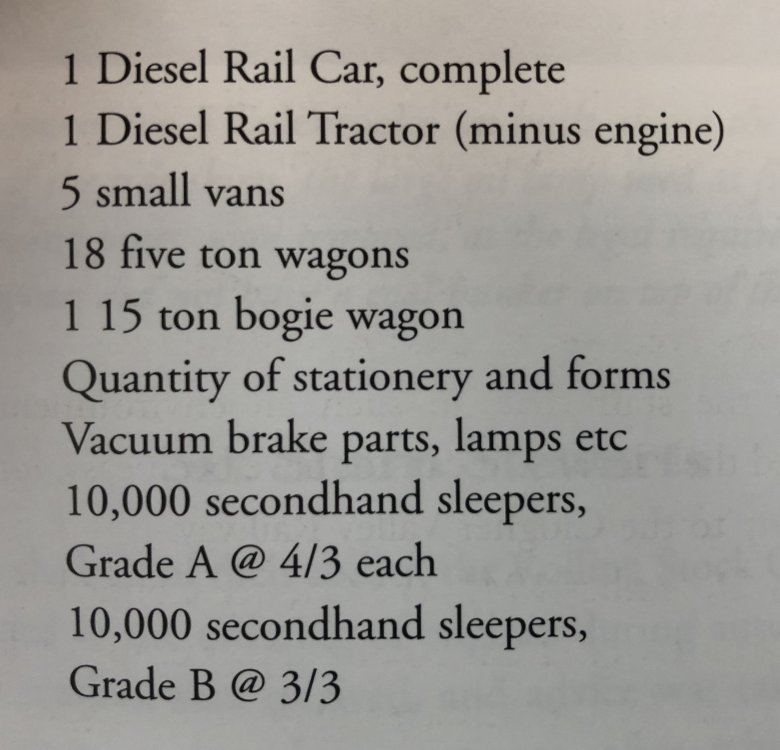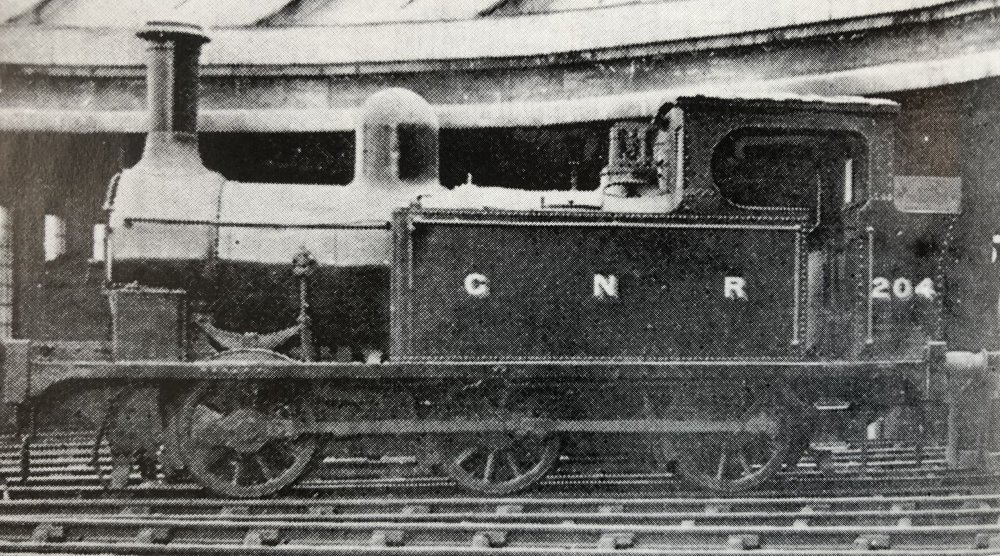-
Posts
15,851 -
Joined
-
Last visited
-
Days Won
393
Content Type
Profiles
Forums
Events
Gallery
Everything posted by jhb171achill
-
Disgraceful, yet sadly I could believe it. That was always a mess, and they vandalised coach 14 inside it, to try to turn it into some sort of 1st class open saloon - when I had a run in it in the early 1990s (late 80s, even), it was in pristine ex-Donegal condition. The best that could happen that lot would be if the Donegal station people took it over and ran the two with "proper volunteers"!
-
EXCELLENT little article.
-
That’s 100% true, Minister. I am aware of Irishrail201’s efforts, plus those of the erstwhile GSRPS. It simply amplified the point I have made elsewhere that in Ireland as a whole, there simply is little or no interest among the public in “old trains”, and ZERO interest, but some hostility, at the idea of putting local authority money into such a scheme. When I was involved with Downpatrick, and the restructuring of it in the early 2000s, I had to attend meetings of Down Co. Council to try to get money and funding. I needed £50k badly, and I told them that the railway would go bankrupt otherwise, which was true. I got the money - a lump sum plus the annual subsidy which keeps it going - but quite a few councillors were vehemently opposed, taking the view that the money would be better spent on other things.
-
Cavan & Leitrim, Ballinamore, mid 1930s. I think my grandfather took this. It shows the original carriage shed, which the GSR short-sightedly demolished to save paying the rates; they would end up paying more for carriage repairs. The rainy Leitrim weather does no favours to anything with a wooden roof and sides, stored in the open!
-
Interesting, Ernie. I definitely had a note of this being Sallins, which I visited twice. Could there have been another water tower like it, I wonder? Seems improbable, but I’m puzzled now.....! ——————————————————— BANG!!!! B201 (ex-C201) after an unfortunate encounter with two milk churns placed in its cab in 1973.
-
Yes, and the local gombeen man councillor needs to be named and shamed, as it was he who personally destroyed the chances of a voluntary body. I won’t name him here, but it’s easy to find out who he is.
-
Now that is a building I’d love to get into!
-
Those who guessed DROMORE, Co. Down, a special mention of honour, as it’s not far away, and has architectural similarities. First prize, however (drums roll......) to..... Irishswissernie! Hillsborough it is, In 1957, just after closure. The track was being lifted, though it hadn’t quite reached Hillsborough yet. Senior would end up living there (in the Station Master’s accommodation, the upper floor) for 18 months (with yours truly, as it happens) while engaged on various civil engineering work in the area. He ensured that he travelled on the lifting train, and was thus the last person over (Nearby) Dromore Viaduct, as he stood at the back of the van in the lifting train as it passed over for the last time..... Little did he know that fifty years later he would pass away after a short stay in a nursing home in Dromore; deep in the Great Northern territory which had become home to one of the last GSR people alive.
-
Not the Derry Road. Answers with some 1930s narrow gauge tomorrow......!
-
Might be
-
No, no and no.........
-
Whitehead. It was one of three that the Society had just acquired from NIR, another seen behind. Two of ex-GN origin would follow, one of which would fall to bits through rot, in the year, after a storm (595). You'll note some of the droplights have still the light grey livery. A short time later, I started work on an external repaint of this coach. Given financial constraints, the instructions I was given, and a cheap deal on paint, I painted it in the wrong shade of maroon, with the wrong markings, incorrect lettering and font style..... My apologies! I was ably assisted in those days by my coaching colleagues of the time, Ken Pullin, Alan Edgar and Alan Love. Them wuz the days. There was always a nice pint in the Dolphin at the end of the day.......
-
It is indeed CVR, but the odd thing is, it was never listed as having been sold at all, never mind to the CDR; thus it was by default recorded as having been scrapped. At no stage does it appear to exist in any CDR stock lists or records, and it is not included in the above list of sale items from the CVR to the CDR. The thing has literally disappeared from all records, anywhere, when the CVR closed in 1942. Nowhere after that has it (so far) appeared to exist at all, yet photographic evidence of it operating on the CDR shows it as late as 1947 at least.
-
-
I would think so, indeed. The few photos of it clearly show it in by then very workstained CVR livery. If it had survived much longer it would surely have been well-photographed by the time Messrs. Casserley, Boyd, Camwell, Fry and O'Dea were taking most of their pictures in the 1950s.
-
For tonight, several unrelated pictures..... 1. NCC open at Antrim in UTA livery, 1970s. By this stage they were only used for ballast trains. 2. The last loco*-hauled carriages on NIR were mostly ex-NCC stock, with one or two ex-GNR, and several de-motored ex-GNR railcars. They were all maroon (same colour as railcars) with a 3 inch (I measured it!) light grey band at waist level. This was the same light grey as on the upper panels on the railcars, not to be confused with the ONE-inch WHITE band used on maroon & blue railcars and Enterprise stock. (* I mean “proper” locos, steam not diseasel!) 3. The ONLY pic which Senior took, the one time he travelled on the Castlederg line just before it closed! An axlebox!!!! 4. Evidently, this engine was under repair when he saw it; the cream-coloured highlighting of the number now barely noticeable.
-
Jack, have you seen Ernie Shepherd's book on the MGWR? It contains some 4mm scale loco outline drawings. The IRRS may also be able to assist. I included an outline of a D16 "Achill Bogie" in the Achill book if that's any use.....it's not fully detailed, though.
-
This is what the CDR bought at the auction following the closure of the Clogher Valley. Ne’er a brake van to be seen. It isn’t one of the “small vans” (which became “red wagons”), as they can all be accounted for separately. The reality is that this van has just been “thrown in”. Being mostly wooden, the scrap value wouldn’t have been much.
-
No, “Achill” was “E” class No. 115, later “J26” 560, which ended its days shunting in Tralee and working to Fenit in 1962 or so. The loco above was named “Newmarket” by the contractor, as it had previously been used building the Banteer - Newmarket line.
-
I have spent the afternoon searching among a considerable amount of information to see if i can come up with some reason why this van is in Donegal, to no avail. Coakham himself refers to it as a "mystery"; I concur! It has retained its very badly faded "maroon" paint and CVR number and markings. One aspect of liveries often not well understood is the different ways that paints have been made up over the years. Modern maroon paint, when faded, will look pinkish, or even gain a yellowy tint. In the past, it tended to assume a more browny hue when badly worn, given rise to stories about vehicles in brown liveries, rather than a deep maroon. The reason is different compounds in paint over the years, different chemical make-ups, and the uses of linseed oil, lead and other compounds being the norm then, but not today. You could paint two vehicles the exact same colour - which would be the "official" livery. But if you used different paints, it is possible that when you saw them lying in a scrap line years later, out of use for, say, five years, and not having last been painted for ten, they would have faded differently. This has sometimes led to incorrect assumptions that railway companies just went to local shops to get a generic paint that looked about right; not the case. The CVR, like many smaller railways, never had a lot in the bank, so regular repaints of locomotives, rolling stick and stations was on a maintenance-need basis only as often as not. Look at just about any colour pictures of the CDR in the 1950s! The CVR painted all carriages and the vans above in a deep maroon. The only place the original paint can now be seen is the background to the CVR crest on display in "Headhunters" in Enniskillen. Senior got a small pot of paint during a visit to Aughnacloy in the late 1930s for that. It is not dissimilar to LMS coach maroon in England; maybe the CVR got it from the NCC in Belfast? However, several eye-witnesses have said that in reality, some vehicles there were a dirty, dull, nondescript browny-red. This was in fact the rich maroon very heavily worn and weatherbeaten. Vans, in particular, never saw a brush with water, let alone one with paint. Thus, this van as shown would have appeared as a very worn, dull, brake-dust-tinted dull reddish-brown. For the modeller, patches or worn maroon would have been visible round the door, where it was handled, and so on.....
-
This is what was used to build the Achill line, in later GNR guise. It seems to have shunted around Clones, and possibly used on the Belturbet branch, up to the early 1930s. It would have been perfect for Downpatrick.
-
Something like that.... By the way, I obtained more detailed about 90's ancestry recently. This shows that some of the parts were made by Grendon's in Drogheda, while obviously the thing was built in Inchicore. It is thought that the carriage portions of these engines may have used "re-cycled" carriage wheels from the GSWR.... While 90 was built in Inchicore, it was not a GSWR loco originally. Instead of a number, it was designated "C" (for Castleisland), only acquiring the number "90" a few years later when the GSWR took over the Castleisland Railway Co. 91 & 92 would follow, with 99 & 100 some years later; some with and without carriages portions. It has been rebuilt heavily. It was very substantially rebuilt about 1915/8 and at one stage was given the boiler out of "Sprite".
-
Me too. It's much easier to do a convincing model of a backwater or very small terminus than a huge one. Imagine trying to make a scale model of Connolly Station, or pre-elimination-of-goods Heuston! It would probably cover an airport hangar. This gets me thinking. How to model a compact city terminus. Elsewhere, someone had mentioned Galway and Harcourt St. One mighty add Letterkenny or Derry (CDR). I always thought that if done as 5'3" stations, the same potential is there. Equally, the station at Albert Quay is suitable for scaling down, and the terminal building (the only bit of the station left) is an ideal prototype for a city terminus due to its handy shape and comparatively compact size. In Senior's collection, there is a photo of Letterkenny taken about 1945 (need to check date). The place is absolutely jam-packed solid with goods and a long loco-hauled passenger train from Strabane. I will fish this out and post it.
-
The SECR "P" class would probably have the nearest suitable chassis, but the wheel design, spokes, etc., wouldn't be right. The ex-Midland J26 or "E" class tanks worked in there too from time to time, especially during the beet season. Had the line lasted into the 1960s, and had steam also lasted, 90 & 100 would still not have done. You'd have seen 560 coming back from Tralee to work this line.
.png.c363cdf5c3fb7955cd92a55eb6dbbae0.png)



